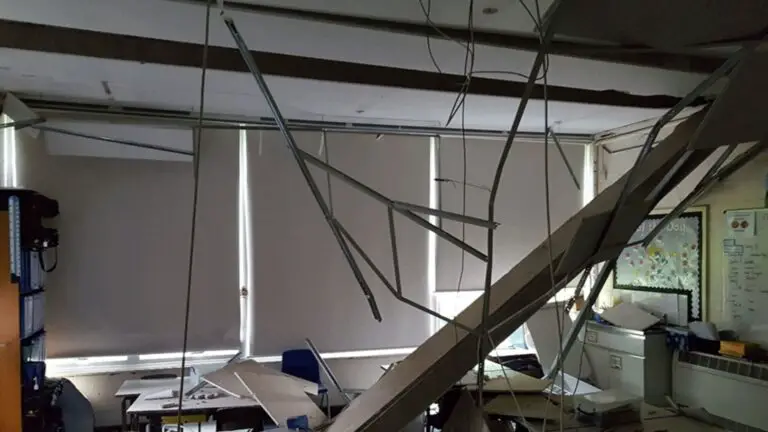700,000 Students Face Urgent School Closures Over Concrete Safety Concerns
Around 700,000 students are facing potential school closures due to concrete safety warnings, and this issue is just the beginning of a larger problem. Recent revelations indicate that approximately 150 schools might be forced to go into lockdown mode after being instructed to close down buildings and classrooms that are at risk of collapsing.
These schools have been directed to shut down structures containing old concrete that poses a danger of crumbling. Education officials have responded by ordering portable cabin units to address the shortage of classroom space. In some extreme cases, up to 20 schools might have to close down completely.
Education authorities have explained that unless these schools can reinforce walls to ensure safety, students will have to attend alternative local schools. The concerning aspect is that this revelation has surfaced just days before the start of the new school term.
What has been unveiled is merely the “tip of the iceberg,” according to union representatives. They caution that hundreds more schools constructed using weak reinforced autoclaved aerated concrete (RAAC) might also receive orders to shut down classrooms and buildings. This situation raises the alarming possibility of yet another round of lockdowns, disrupting students’ education once again.
Dame Rachel de Souza, the Children’s Commissioner for England, expressed the urgency for stability and normalcy for children and young people after a prolonged period of disruption due to the pandemic. Proper communication with affected families and clear guidance on the safety of alternative schooling arrangements is essential.
Simon Allford, President of the Royal Institute of British Architects, emphasized the scale of concern over 700,000 pupils attending schools that require significant rebuilding or refurbishment. Most schools have sections containing RAAC, found in walls, floors, and ceilings of various buildings, including schools, nurseries, and sixth forms.
A critical shift in position was made this week by the Department for Education (DfE), which now recommends vacating areas with confirmed RAAC even if they are not deemed critical, unless proper mitigations are in place. The current advice dictates that all RAAC should be taken out of use and immediate mitigations implemented.
To address this issue, the DfE has promised support, including funding for urgent mitigations, provision of propping tools, and even temporary classrooms if necessary. These efforts will be fully funded by the government. Schools are now scrambling to devise emergency plans just days ahead of the new school term.
Parents are expected to receive information regarding whether their child’s school is affected in the coming days. Additionally, the Cabinet Office has revealed that 34 more public buildings are under investigation for using RAAC, including 24 hospital sites across the country.
Understanding the Issue: RAAC and Its Problems
Reinforced autoclaved aerated concrete (RAAC) is a lightweight type of concrete commonly used in various parts of buildings, including roofs, floors, cladding, and walls. Although it was widely used in the UK since the mid-1950s, its use diminished by the 1980s. RAAC has been detected in numerous school buildings, offices, and other structures.
The problem with RAAC arises when certain planks with defects experience additional strain due to harsh weather conditions, causing them to weaken and ultimately collapse. This vulnerability has prompted safety concerns in multiple schools across the country.

